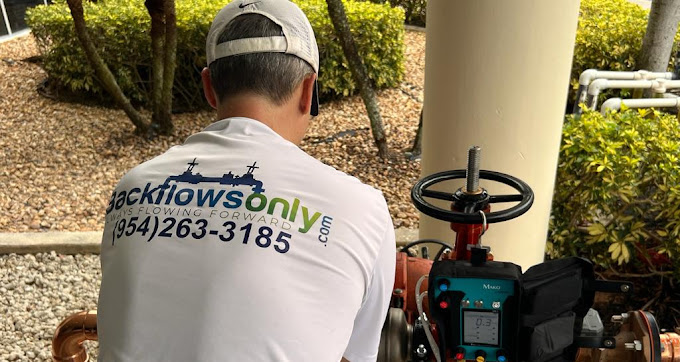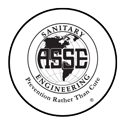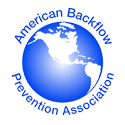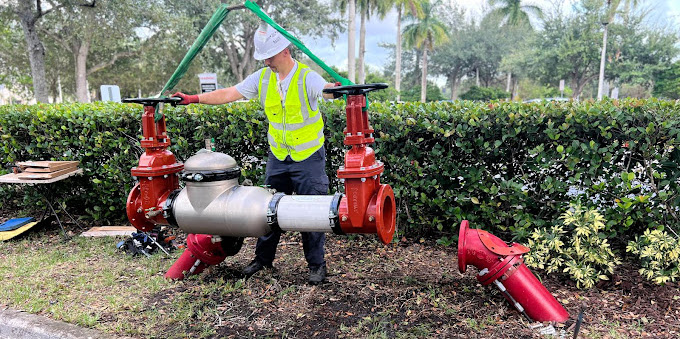We install new backflow prevention equipment or perform any necessary repairs on backflow preventers throughout South Florida, including Broward County cities such as Margate, Hollywood, FL, Davie, Cooper City as well as surrounding counties, including Palm Beach County.

Installing a backflow preventer in Fort Lauderdale and the surrounding areas is the first step in protecting our water sources from cross-contamination. Backflow prevention devices are necessary and one of the top priorities of any residence or business where there are cross-connections and possibilities for contamination. We’ll take care of your backflow prevention installation needs with the utmost quality in equipment and customer service. Whether you need a potable water, irrigation, or sprinkler backflow prevention device installed, you can trust Fort Lauderdale’s expert team of quality-focused technicians here at Backflows Only.
Whatever time of day it is, we will be there for you. Our licensed, insured, bonded, and certified team is here to help with Fort Lauderdale’s backflow prevention installation or emergency needs, along with our 24-hour services options. Regardless where you are in South Florida, we can handle your Backflow installation, repairs, and maintenance for residents and businesses. Our certified technicians are highly professional and work efficiently to complete your job. Our ranges of services are reliable and affordable. It’s essential to keep an eye on your Backflow system and make sure it’s running smoothly at all times. Your satisfaction will be our top priority. We are one of the best in the business.
The number of backflow prevention devices installed improperly by both the professional contractor and the property owner or their maintenance personnel is reaching a level that is difficult to believe. Backflow prevention assemblies and devices must be installed in the proper manner so that they both can fulfill their purpose in protecting the water supply and also be tested and repaired in a safe, timely manner.
We are the only company you should trust, so you won’t have to take a gamble with other companies for your backflow repair needs. Our certified technicians are equipped with state-of-the-art equipment.
They can quickly install and test the required backflow prevention assembly to a standard set by local standards and Florida rules. Contact us today if you need Backflow Preventer Installation in Fort Lauderdale or the surrounding communities!
Make sure your home, business and community are protected. Our test will determine if your water supply is safe. Get Your Free Quote Now.
EXCELLENTTrustindex verifies that the original source of the review is Google. Fast, good, same day service. I like it!Trustindex verifies that the original source of the review is Google. I’m the General Manager for Devon Self Storage in Pompano Beach , I called Backflow Only on a Saturday, Robert responded quick to repair a water spigot that was damaged by a tenant’s vehicle, Robert is very professional , detailed in his work , friendly and honest. I highly recommend Backflow Only no doubt.Trustindex verifies that the original source of the review is Google. Great service!! Very kind and respectful as well. Timely manner and they get the job done. Thank you again for your services!!Trustindex verifies that the original source of the review is Google. We recently had the pleasure of working with Robert Nelson from BackflowOnly for a backflow installation, and we couldn't be more satisfied with the experience! From start to finish, Robert was professional, knowledgeable, and incredibly efficient. If you need backflow services, I highly recommend BackflowOnly and Robert Nelson. Thank you, Robert, for a job well done!Trustindex verifies that the original source of the review is Google. Robert provided great service and did a fantastic job. I would highly recommend his work as he is very knowledgeable and highly skilled.Trustindex verifies that the original source of the review is Google. Robert specializes in backflow valves and is an expert. I researched with a local backflow part distributor to confirm my suspicion that he is an honest and fairly priced business. He changed out/updated the plastic valve at my business early on New Year’s Day before my store opened. Thanks again!Trustindex verifies that the original source of the review is Google. Backflows Only provided excellent backflow air testing for my business. Robert is very professional, efficient, and thorough, ensuring everything was up to code. I highly recommend their services for anyone needing reliable testing.”Trustindex verifies that the original source of the review is Google. We had a backflow problem at our condominium and had to shut the water off for a few hours until we could reach a specialist to come out and address the issue. Backflows Only appeared in my Google search. Robert came out on a Saturday and resolved the problem the same day, before 5:00 p.m. The owners were thrilled, and we were thoroughly satisfied with his expertise. Thank you so much Robert! We will definitely use your service in the future.Trustindex verifies that the original source of the review is Google. Came right away, perfect job! Clean work and reasonably priced for professional job.Trustindex verifies that the original source of the review is Google. Great company! They both certify and have replaced backflows at our 10 properties in S Florida. Highly recommend them!!Verified by TrustindexTrustindex verified badge is the Universal Symbol of Trust. Only the greatest companies can get the verified badge who has a review score above 4.5, based on customer reviews over the past 12 months. Read more




At Backflows Only, we will take care of your backflow prevention installation needs with the utmost quality in equipment and customer service. Whether you need potable water, irrigation, or sprinkler backflow prevention device installed, you can trust Fort Lauderdale’s expert team of quality-focused technicians here at Backflows Only.
Family-owned business In South Florida area
One-Stop Solutin for backflow services
Excellence provided on every service call
Part in stock providing same day service
We have fixed more backflows in the last 5 years than most company's have done in the past 20 years

Backflow prevention devices are necessary and one of the top priorities of any residence or business with cross-connections and possibilities for contamination. Installing a backflow preventer in Fort Lauderdale and the surrounding areas is the first step in protecting our water sources from cross-contamination.
A backflow preventer is a plumbing device that prevents water from flowing reversely. Installing a backflow preventer will allow water to flow only in one way, averting the contamination of potable water.
The device works by regulating the pipe pressure and preventing the water from flowing in the opposite direction. Without a backflow preventer, the foul water flows backward. Instead of potable water flowing into your home or building, the wastewater goes back to the primary supply system, contaminating the municipal piping system or your private supply system. A backflow preventer device allows drinking water to run into your building’s piping system but prevents wastewater from flowing into the public water supply (the so-called cross-connection).
There are three locations where people typically install a backflow preventer device: inside a vault (underground), inside a building, and outside above the ground. Only one of these locations is an appropriate place for a backflow preventer. Let us see why.
Installing a backflow preventer inside an underground vault is an outdated method that is still in use nowadays, mainly because of aesthetic reasons. The problem with subterranean vaults is that they are underground, meaning greater chances of flooding. The sole purpose of backflow preventers is to prevent cross-connections (mixing drinking water with wastewater). Subterranean vaults contradict that purpose because they flood, causing cross-connections and contamination. Besides, inside vaults are considered confined spaces, posing health and safety risks (toxic gases, wild animals) for people repairing and maintaining them, including property owners or children.
The other option is installing a backflow preventer inside a building. This method is problematic for two reasons: flooding and liability for the design engineer. First, installing backflow preventers inside a building poses grave flooding risks, especially at the end of the work day. The possible scenario involves stopping water demand at the end of the day, which causes water to evacuate into the relief valve. Because the check valve is not closing, the water flows into the building. Naturally, a large amount of water inside the building causes significant damage, resulting in the designer engineer’s liability.
Installing a backflow preventer outside and above the ground proved to be the best practice. Unlike devices installed below terrain and inside the building (posing safety, health, and flood risks), backflow preventers above ground and outside are the best of two worlds. Installing backflow prevention devices outside and above the surface protects property, the environment, testing and maintenance workers, and building inhabitants. In addition, it shields designer engineers from unnecessary liability. Although some people avoid installing backflow prevention devices outside for aesthetic reasons, that is the best way to ensure they serve their sole purpose – preventing backflow and contamination.
To protect the backflow devices themselves, put them in enclosures. When choosing the protection for your device, follow applicable manufacturing standards and regulations. The compartment must have an appropriate locking and drainage mechanism, temperature maintenance capacity, and a strong and rugged structure.
The most common materials for backflow preventer enclosures are metal cages, aluminum, and fiberglass. Many people also use brick and blocks to build protection for backflow devices.
Whatever material you choose, ensure it conforms to all applicable safety and health standards. An appropriate enclosure should satisfy draining and temperature standards, as well. Choosing the right size and color will help you meet your design demands. Depending on the size of the backflow preventer, the enclosure can vary. Some backflow preventers (such as N-type devices) have a smaller footprint, allowing you to install smaller compartments. Choosing the color that will blend into the environment can resolve your dilemmas regarding the design of the backflow preventer devices. The most common are green and tan.
We install new backflow prevention equipment or perform any necessary repairs on backflow preventers throughout South Florida, including Broward County cities such as Margate, Hollywood, FL, Davie, Cooper City as well as surrounding counties, including Palm Beach County.